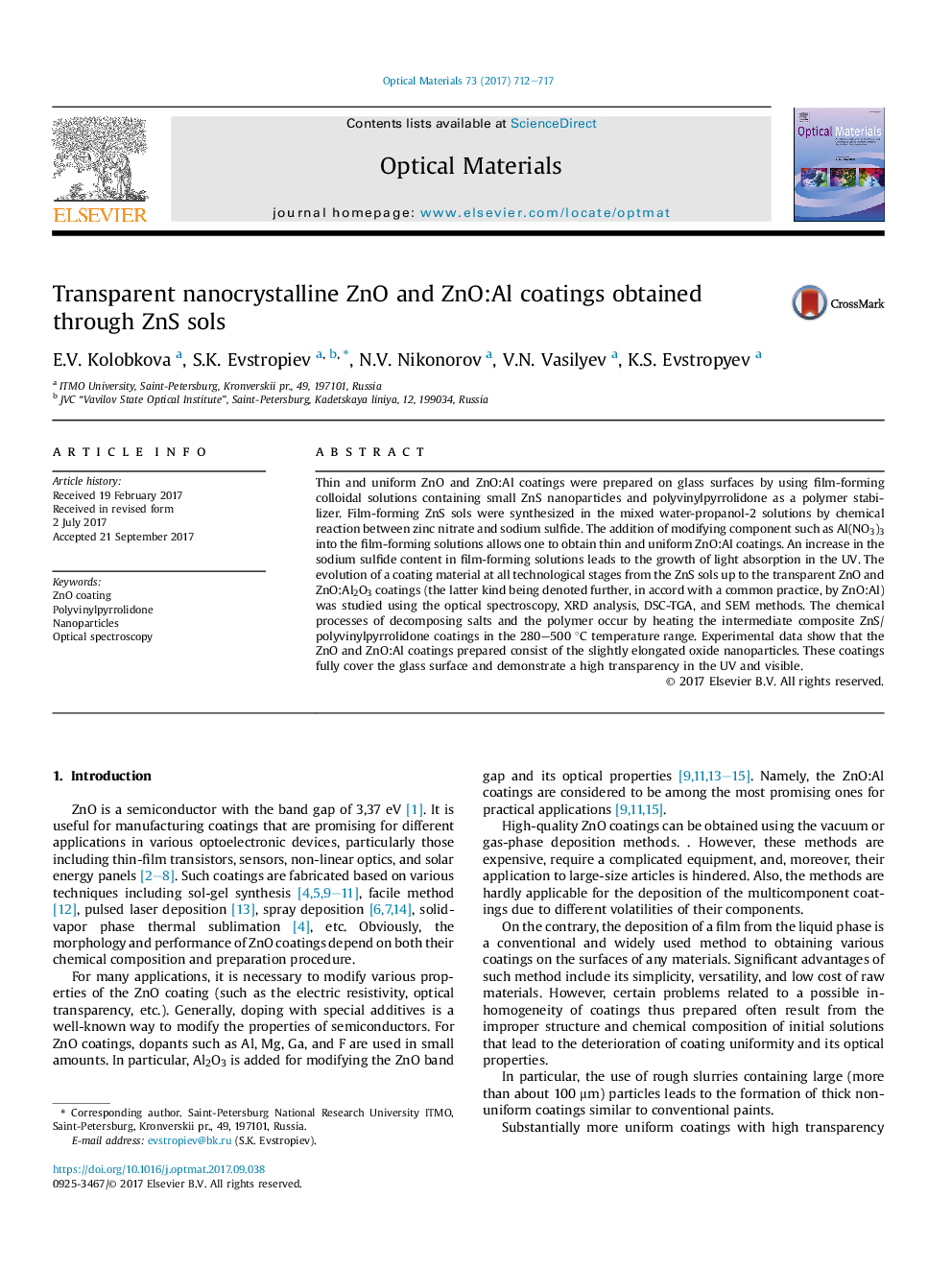| Article ID | Journal | Published Year | Pages | File Type |
|---|---|---|---|---|
| 5442423 | Optical Materials | 2017 | 6 Pages |
Abstract
Thin and uniform ZnO and ZnO:Al coatings were prepared on glass surfaces by using film-forming colloidal solutions containing small ZnS nanoparticles and polyvinylpyrrolidone as a polymer stabilizer. Film-forming ZnS sols were synthesized in the mixed water-propanol-2 solutions by chemical reaction between zinc nitrate and sodium sulfide. The addition of modifying component such as Al(NO3)3 into the film-forming solutions allows one to obtain thin and uniform ZnO:Al coatings. An increase in the sodium sulfide content in film-forming solutions leads to the growth of light absorption in the UV. The evolution of a coating material at all technological stages from the ZnS sols up to the transparent ZnO and ZnO:Al2O3 coatings (the latter kind being denoted further, in accord with a common practice, by ZnO:Al) was studied using the optical spectroscopy, XRD analysis, DSC-TGA, and SEM methods. The chemical processes of decomposing salts and the polymer occur by heating the intermediate composite ZnS/polyvinylpyrrolidone coatings in the 280-500 °C temperature range. Experimental data show that the ZnO and ZnO:Al coatings prepared consist of the slightly elongated oxide nanoparticles. These coatings fully cover the glass surface and demonstrate a high transparency in the UV and visible.
Related Topics
Physical Sciences and Engineering
Materials Science
Ceramics and Composites
Authors
E.V. Kolobkova, S.K. Evstropiev, N.V. Nikonorov, V.N. Vasilyev, K.S. Evstropyev,
